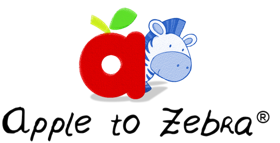Weather
Weather Reports – What is weather? Name different types of weather.
Listen with the child to a weather report on the television, the radio or the newspaper. Why is it important to know what the weather is?
Have the child keep a calendar of the weather for one month. Each day they should draw in a symbol for the weather that day, as a sun for sunny, an umbrella for rainy, etc. After a month make a graph of the different types of weather.

Fill an old suitcase with assorted clothing, such as mittens, a bathing suit, umbrella, sweater, etc. Ask the child to tell you when the child would need different items.
Let the child cut out clothing for different seasons and weather from old catalogues.

Talk about jobs that are influenced by the weather, such as farmer, baseball player, traffic officer, etc.
Make a weather chart, or let each child make his or her own weather chart.

Thermometers – Take two thermometer and put one in hot water and one in cold water. Compare. Explain how the red mercury expands (or gets larger) when it gets hot and contracts (or gets smaller) when it cools.

Make a paper thermometer and use elastic coloured red for the mercury.
Put a large thermometer on the playground and call the child’s attention to it. Chart the daily temperature.
Rain – Explain the water cycle. When water in lakes and oceans is warmed, it evaporates and goes in the air. Large clouds form from the water vapour, and when they get dark and heavy it rains. The rain flows back into the lakes and oceans and the cycle begins again. Ask the child to draw a picture of the water cycle.

Demonstrate how water evaporates by wiping a wet sponge on the bulletin board or placing a saucer of water in the window.
Make it rain by holding a pan lid over boiling water. The steam will collect and fall back down into the pan like rain.
Illustrate how clouds get heavy and cause rain by squeezing a sponge full of water.
Place a rain gauge on the playground.
To show what causes lightning, darken the room and rub two balloons together. The sparks you see are electricity; the same thing happens when clouds rub together.
Thunder is the noise made when lightning pushes the air away. Take a paper bag, blow it up, and hold the end tight. Push on the bag and make it pop like thunder.
Rainbows – Make a rainbow by squirting the hose in the sunlight on a hot day.

Let the child experiment making rainbows with a prism.
Put a small mirror in a clear glass of water. Place the glass in a sunny window so the sun shines on the mirror, then look for the rainbow on the wall or ceiling.
Clouds – Clouds tell you what the weather will be, so look at the clouds when you are on the playground and predict the weather.
Lay on your back and look for pictures in the clouds.
Wind – Wind is moving air. Can you see the wind? How can you tell if there’s wind outside?
Hang a wind chime on the playground, or make your own wind chime with pie pans.

How do people use the wind?
Make a pinwheel.
Make a wind-tester by stapling a piece of ribbon or strip of cloth to a straw.
Take it outside and see which way the wind is blowing.

Seasons – Categorize pictures of the four seasons.
Have the child draw or paint pictures of their favourite season.

Fall is a “cool off” time. Discuss signs of fall. Pretend to be leaves falling off a tree and “dancing” around.
We are farthest away from the sun in the winter, and that is why it is so cold. Catch snowflakes on your tongue or make tracks in the snow. What do animals and plants do in the winter? Catch snowflakes on dark paper and observe them with a magnifying glass. Melt snow and see if it’s clean and clear or polluted. Take a full cup of snow, melt it, then measure the difference between when it was frozen and a liquid.
Spring is a “warm up” time. Go on a nature walk and look for signs of spring. What do animals do in the spring?
The earth gets close to the sun in the summer, and that is why it gets hot. What sports and outdoor activities can you do in the summer?
